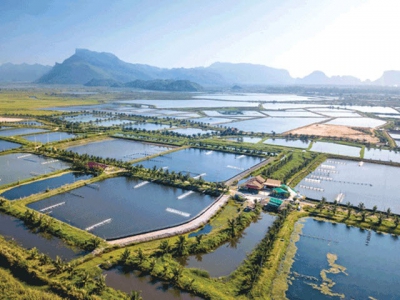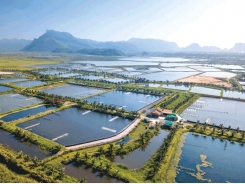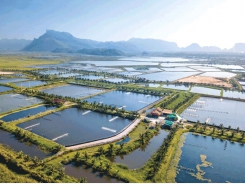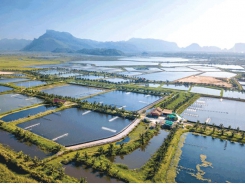Land Based Sustainable Aquaculture Strategy - The Last Part

20/ Decommissioning an aquaculture facility
The objective of the NSW LBSAS is to ensure that aquaculture enterprises are established and operated in a sustainable manner. As a result, emphasis has been placed on the need for careful site selection, design, operation and business management.
In the advent of an aquaculture enterprise ceasing operations, the site should be secured and not generate unacceptable off-site environmental impacts or create an unsafe environment (eg. electrical infrastructure, chemical storage, building security).
Decommissioning works may include:
- closure of water intake and outlet channels and removal of pipes/pumps from
- rivers/estuary;
- stabilisation of disturbed riparian zones;
- stabilisation of ponds/dams;
- perimeter fencing.
21/ Good neighbour policy
The establishment and maintenance of good public relations is essential for individual farms and reflects on the industry as a whole. Aquaculture, in part due to its novelty, attracts a large amount of community interest. It is important to recognise this interest and deal with it in a sensitive manner.
22/ Tourism and the community
Consumers are increasingly concerned with the environmental credentials of food production and aquaculture enterprises can benefit from demonstrating its environmental credentials. The public should be dealt with openly and honestly even when things go wrong. It may be useful to seek advice in preparing a Public Relations Management Plan for promoting products as well as for dealing with routine enquiries and complaints. Active and transparent management of community relationships can pay long term dividends.
Making provision for the public to visit the facility either as part of a tourist visitor centre or as an active program (Fishout) can help establish an open door approach to the broader community.
This can help to promote aquaculture in the local economy as well as help promote the industry as a whole.
23/ Complaints handling procedures
Aquaculture farms may be required to establish complaint handling protocols under their conditions of consent. Local Councils should be informed of the procedures so that on receipt of any complaints they are able to redirect issues to the appropriate regulatory departments. The
Complaints Handling Protocols may include:
- a contact number and a site contact person who manages complaints;
- a complaints register including a record of the complainant, the date/time, the nature of the complaint;
- proposed mitigation measures and follow up with the complainant;
- any contingency measures when repeated complaints are received including provisions for additional monitoring and amelioration measures;
- any compliance performance agreements with residents;
- any reporting procedures to relevant government agencies or Council.
It should be recorded if complaints originated from normal operational procedures, an ‘incident’ or occasional procedure:
- if from occasional procedures, discussions should be held with complainants regarding whether it was the timing or nature of the impact and how the impacts can be better managed. In many cases an agreement can be reached between parties regarding procedures, timetables, duration and intensity;
- if it resulted from normal operation procedures, these procedures should be reviewed in discussion with the relevant approval authorities.
24/ Feed management
Be aware!
That a system that delivers feed at optimum levels will promote maximum growth and feed conversion, prevent disease, maintain water quality and results in the lowest cost of production.
Feeds and feeding are usually a major component of total operating costs of aquaculture operations. Improvements in feeding strategies (ie. feeding frequency, feeding rates and delivery methods) can significantly improve farm profitability. The goal is to feed efficiently using a diet that will produce rapid growth, best food conversion efficiency for the least cost.
Feed is the major contributor to pond/tank water quality deterioration. To minimise feed waste managers should:
- Regularly sample stock for growth and biomass; grade stock, adjust rations and pellet sizes as the stock grows. Over feeding causes poor water quality and wastage; underfeeding will result in poor growth;
- Use high quality feeds meeting the species nutritional requirements (eg. for protein and essential amino acids, digestible energy, total fat and essential fatty acids, trace minerals and vitamins);
- Store feed in a rodent proof, low humidity, cool room;
- Suspend feeding when water quality or disease problems are suspected.
- The rate of delivery of feed is as important as the ration amount to prevent wastage.
25/ Harvest management
Incorrect harvest procedures can cause fish stress and injury that will adversely affect product quality, marketability and the subsequent selling price. Harvesting methods might include the use of nets, traps, trawls or the draining of ponds/tanks.
Harvest procedures should minimise stress, even if animals are to be slaughtered. It is important to maintain water quality during harvest procedures; use bottled oxygen when practicable. Design preharvest procedures to ensure:
- a planned approach is undertaken; avoid harvesting in poor water quality, following feeding, when animals are diseased and during the heat of the day;
- adhere to any therapeutic or chemical withholding periods and purge animals if required;
- ensure seafood is chilled internally (use a probe thermometer) and packed well with ice.
Related news
Tools

Phối trộn thức ăn chăn nuôi

Pha dung dịch thủy canh

Định mức cho tôm ăn

Phối trộn phân bón NPK

Xác định tỷ lệ tôm sống

Chuyển đổi đơn vị phân bón

Xác định công suất sục khí

Chuyển đổi đơn vị tôm

Tính diện tích nhà kính

Tính thể tích ao




 Startup tech companies promise to further expand Indonesian…
Startup tech companies promise to further expand Indonesian…  Land Based Sustainable Aquaculture Strategy - Part 12
Land Based Sustainable Aquaculture Strategy - Part 12